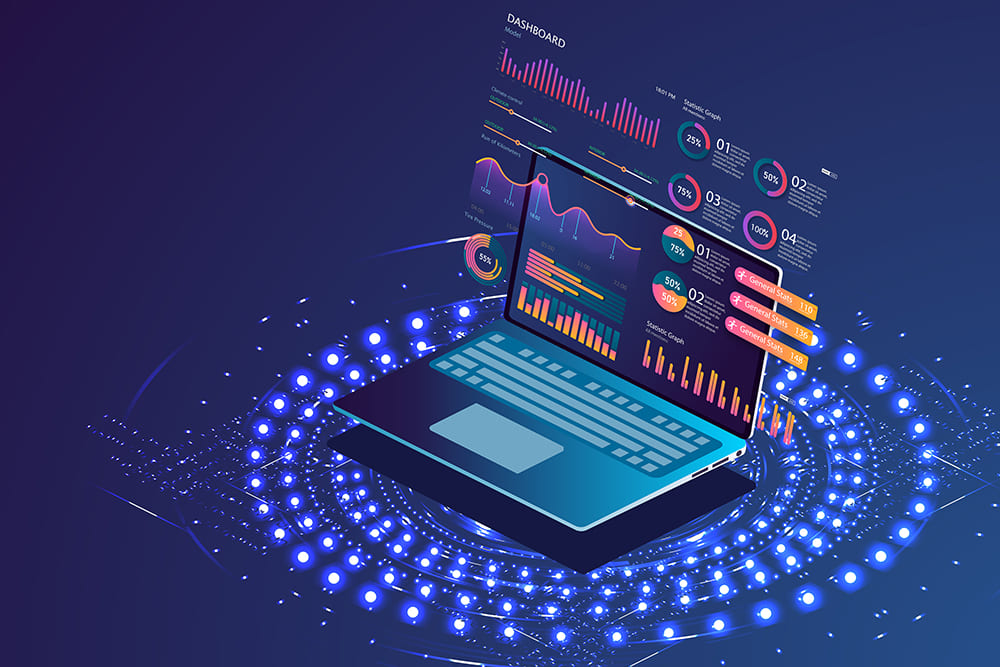What Are The Latest Trends in Data Science?
23 August 2021
The benefits of a data-driven approach to business are well established but not set in stone. The relentless march of technological progress means the boundaries of what is possible are constantly being redrawn, spawning new behaviors, trends and buzzwords.
Data science gave rise to AI as we know it in business today – the ability for machines to “learn” to become continuously better at making predictions based on the data they are given. Today, the most exciting trends in data revolve around these cognitive decision-making capabilities.
Here’s an overview of how this usage is evolving – signposts that point the direction of travel between where we are today and where data science will take us tomorrow:

AI as-a-service
AI has been around for many years, but it's only recently that it's become truly useful in many everyday business functions. This is because traditionally, it involved expensive up-front investment in infrastructure, intellectual property, and skills. As a result, hugely powerful and universally useful technologies like machine learning and artificial cognitive networks were confined to big business and academic institutions.
What’s pushed AI into the mainstream is the emergence of cloud-based as-a-service solutions, where the infrastructure is sitting waiting for us in a data center, and we simply pay for however much of it we want to use. This can be in the form of plug-and-play applications that enable us to deploy data-driven solutions such as automated marketing, recommendation engines, or predictive maintenance, even if we are only a small organization with a limited budget for AI research and development. The evolution of AI as-a-service means it is no longer simply helping us to automate repetitive workloads such as data entry or language translation. Increasingly it will help us make data-driven decisions such as setting strategic targets and creating smarter products and services.
Data-generated content creation
We've had AI-created art, music, and even computer programs, and until recently, it's generally been seen as a curiosity. However, the ability of AI systems to continuously improve – as well as the development of more sophisticated machine learning algorithms such as generative adversarial networks (GANs) – mean that machines are increasingly giving us a run for our money when it comes to creativity. It might be a while before we’re excited about the prospect of sitting down and reading a novel by a famous robot author, but for less ambitious endeavors – such as writing product descriptions or creating highlights videos for sports events – AI is becoming increasingly common.
One huge advantage that AI has here over human creatives is that the speed it can work at means it can far more efficiently produce targeted, personalized content. Product descriptions on websites can be tailored for the person that the AI predicts will be reading them, and adverts (or even movies) could have a personalized soundtrack, algorithmically created to appeal to a specific individual.
Small Data
Data-driven business initiatives of the last decade have involved using huge datasets to understand things – customers, markets, the weather – and predict how their behavior will influence our own interests. But as we saw more clearly than ever in 2020, the world is a changing place. When dramatic and world-changing events happen, models need to be rapidly adjusted – and often, this means that data from the "old world" just isn't as valuable or useful anymore! This means that people are now talking about "small data" – technology and practices that enable data-driven decision-making to continue when the amount of information we have is limited. Although it sounds like the literal opposite, small data practice is closely linked to big data concepts and will increasingly be bought into play when data becomes unexpectedly outdated due to unforeseen events or is otherwise incomplete or unavailable.
Citizen Data Scientists
A data-driven and analytical approach is increasingly useful in just about any human occupation or profession. The problem is there aren’t enough traditionally-trained data scientists to go around. This lack of capacity to capitalize on opportunities to leverage data is undoubtedly causing a large amount of inefficiency within many organizations, purely through missed opportunities.
The citizen data scientist has been touted for some time as the solution to this dilemma, and the changed working dynamic of the pandemic era has undoubtedly accelerated its uptake, with more of us relying on digital tools to do our jobs than ever before. A “citizen data scientist” (a term coined by Gartner) is someone who is not necessarily academically trained as a data scientist or employed as a data analyst but has the ability to work with and implement data solutions as part of their day-to-day work. The term could encapsulate a CEO who uses a data platform to manage their business or a salesperson who implements tools and platforms to make data-driven customer decisions. They don't need a Ph.D. in data science - only the knowledge and ability to an analytical and scientific approach to their data work, by measuring their work, recording their successes, and learning from their failures. Closely related to the “AI as-a-service” trend, a big driver for the explosion in popularity of this trend is the emergence of "no-code" and natural-language data science platforms, allowing anyone to have a stab at creating smart applications even if they don’t know anything about software development.
Edge Analytics
A hot-topic buzzword for a few years but now undoubtedly starting to gain traction in the real world. Edge computing is so-named to distinguish it from the concept of cloud computing, where all of the work is carried out in centralized, often off-site data centers to be consumed on local terminals through APIs and dashboards. With edge, the computational heavy-lifting is carried out as close as possible to the point where the data is collected, often within the data-collecting device itself. Applications for edge computing exist in high-concept technology use-cases such as self-driving cars – where the cars themselves need to be able to make a decision on whether they are in a dangerous situation and should take evasive action, without having to send everything they know off to a data center and wait for the result to come back.
Edge computing means decisions can be taken more quickly and reduces bandwidth taken up sending information backwards and forwards from the cloud. It also has exciting applications as diverse as space travel (allowing unmanned spacecraft to take more decisions for themselves, rather than having to send information back to a base station before action can be taken) and health tech. Think of remote patient monitoring devices that could alert the wearer, as well as doctors or carers, when it senses something might be wrong while being respectful of privacy.
Ethical and Responsible AI
There are many dimensions to ethicality in AI, and it’s fair to say that our understanding of the concept is evolving alongside the technology itself. When it first became clear that AI ethics are an issue that many businesses will have to address, questions largely revolved around privacy and the potential for technology to be intrusive. Since then, the extent that human or systemic bias can lead to automated, large-scale machine bias has become apparent. This means mitigating AI’s potential, if left unchecked, to magnify prejudice and accelerate inequality has become a crucial challenge for anyone working with data and cognitive algorithms.
Today, it’s clear that AI has the potential to change many aspects of how the world works, so the key ethical questions relate to how technology can be used to help us solve the biggest problems facing the world, such as curing disease, reducing poverty, protecting the environment and driving human progress. AI technology is expensive, and there are only a limited number of humans with the skill to deploy it, so the need to ensure these resources are dedicated to applications that will truly be valuable to people and the planet has led to the emergence of organizations such as the Partnership on Artificial Intelligence to Benefit People and Society - founded by tech giants including Google, Microsoft, and Apple. Most forward-thinking organizations involved with AI now often have ethics boards dedicated to ensuring that nothing they do could be perceived as having harmful effects, and this will become increasingly common.
Related Articles
The New HR Playbook: Catalyze Innovation With Analytics And AI
Beneath the surface of every HR function, there lies a treasure trove of data. But if that[...]
The Eight Biggest HR Trends In 2024
For those working in employee and people management, the focus in 2024 will be on managing[...]
The New Frontier In Workplace Safety: Data Analytics And AI
Almost all employers want to ensure their workplaces are safe zones that are free[...]
The Biggest Banking And Financial Services Trends For 2024
2024 promises to be a landmark year in banking and finance, marked by significant[...]
The Evolution Of Data-Driven And AI-Enabled HR
The pulse of any organization lies not just in its products or services but in its people.[...]
How Data And AI Are Reshaping Contemporary HR Practices
The world of human resources (HR) stands on the precipice of an exciting era powered by data and AI.[...]
Sign up to Stay in Touch!
Bernard Marr is a world-renowned futurist, influencer and thought leader in the fields of business and technology, with a passion for using technology for the good of humanity.
He is a best-selling author of over 20 books, writes a regular column for Forbes and advises and coaches many of the world’s best-known organisations.
He has a combined following of 4 million people across his social media channels and newsletters and was ranked by LinkedIn as one of the top 5 business influencers in the world.
Bernard’s latest book is ‘Generative AI in Practice’.










Social Media